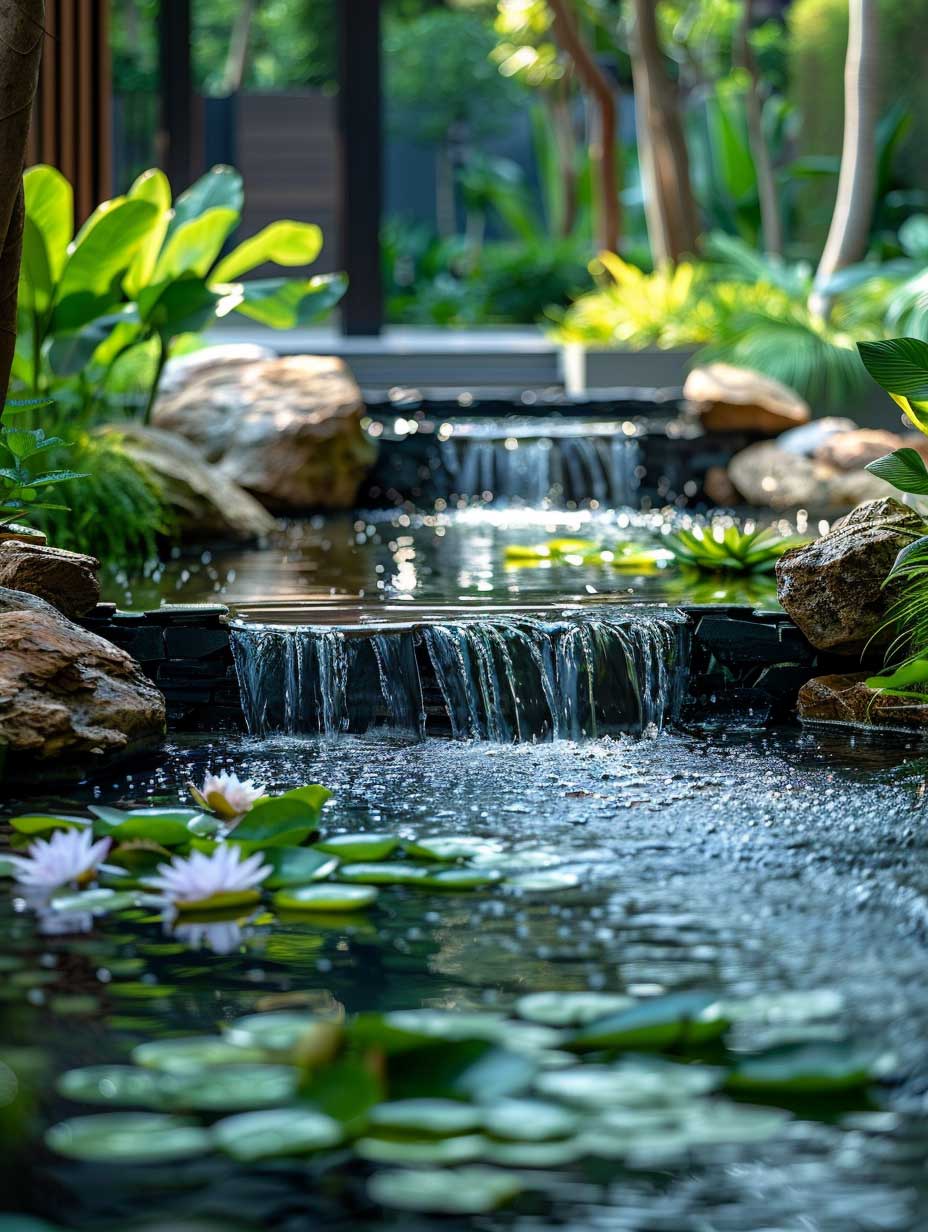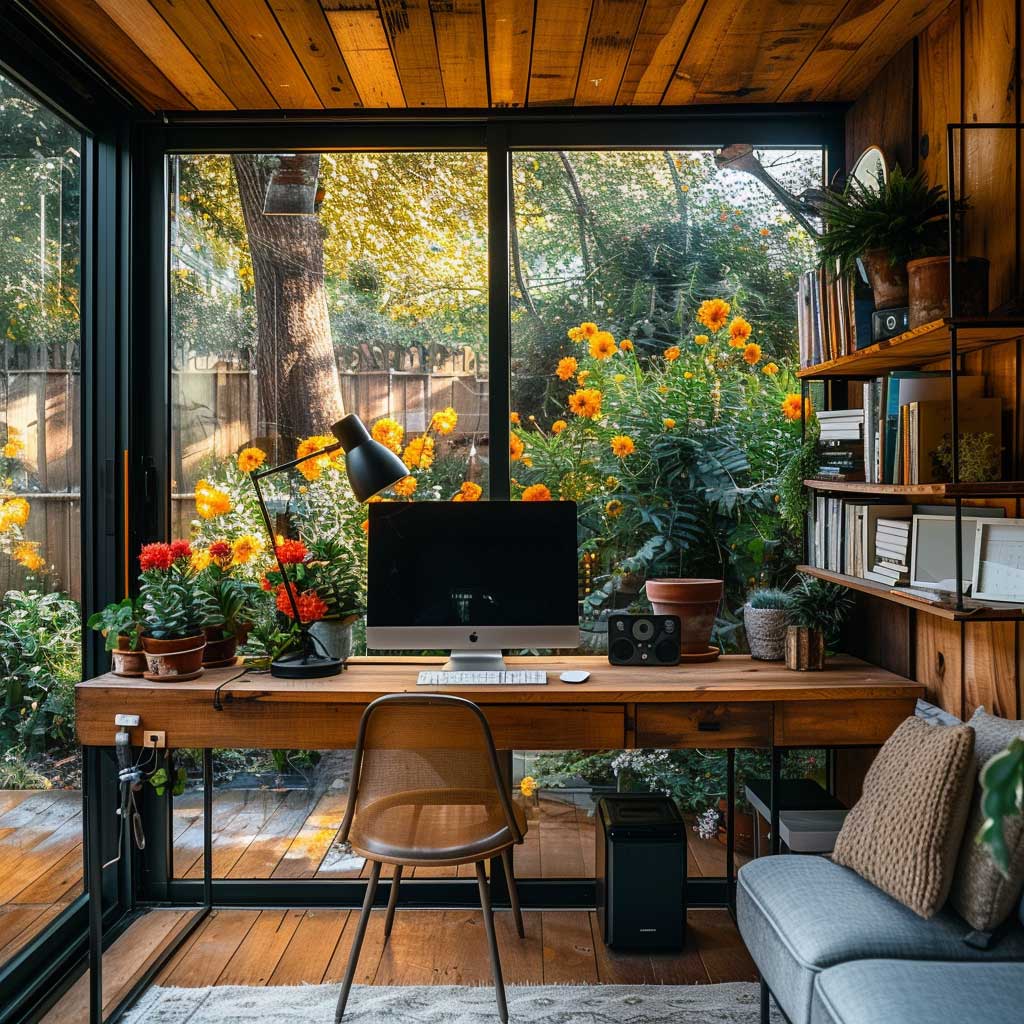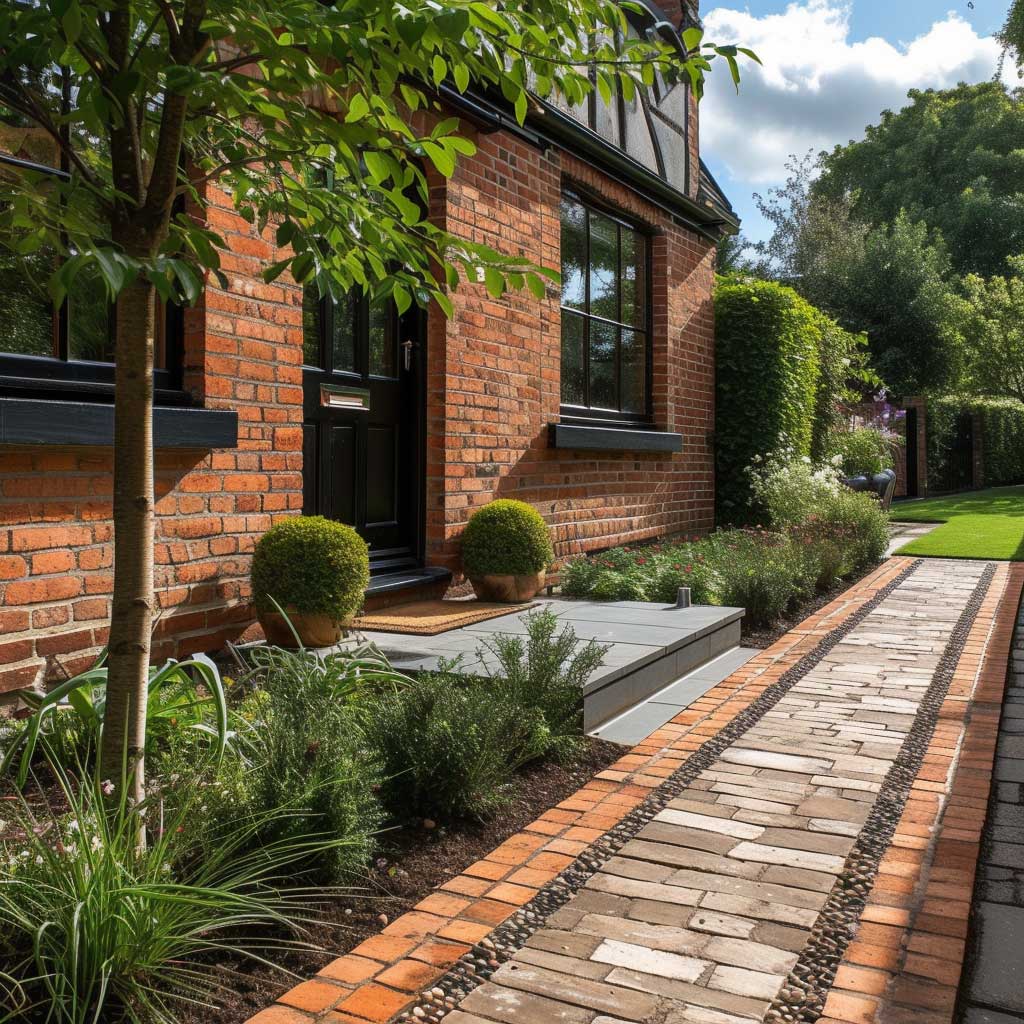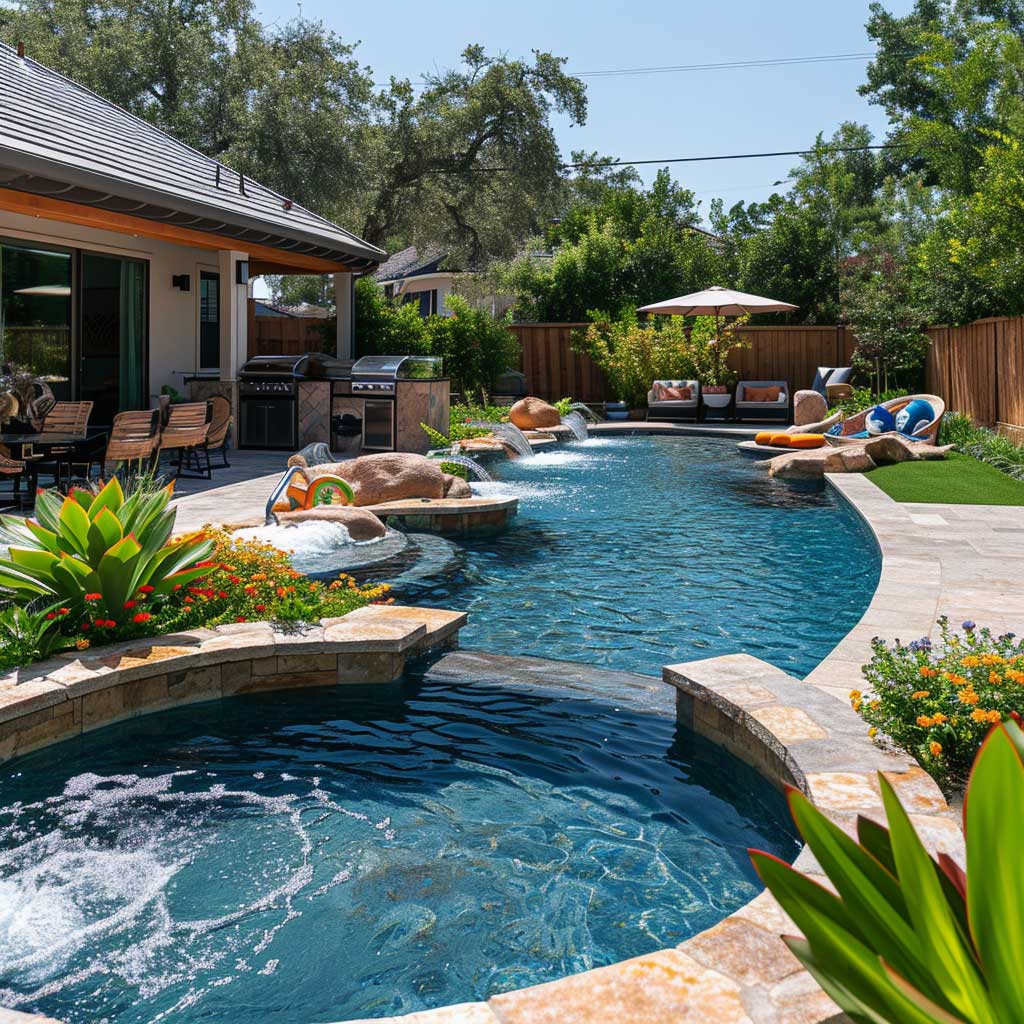Garden design transcends mere landscaping to become a form of art that paints with the vibrant colors of nature. This creative process blends aesthetics, functionality, and environmental stewardship, allowing designers and homeowners alike to express themselves through the living canvas of their outdoor spaces. Through thoughtful selection of plants, innovative use of materials, and meticulous attention to layout, gardens become expressions of beauty, reflections of personal style, and sanctuaries for both people and wildlife.
Sculpture Among the Green: An Integration of Art and Nature




In the realm of garden design, the confluence of sculptural art and living greenery presents a canvas where human creativity and natural beauty engage in a silent dialogue. This unique fusion not only enhances the visual appeal of outdoor spaces but also imbues them with a deeper sense of meaning and contemplation. A garden where sculptures are carefully integrated among verdant plantings offers an intriguing exploration of form, texture, and the interplay between the man-made and the natural.
The heart of this garden lies in its ability to harmonize the innate contrasts between the rigid, enduring nature of sculpture and the ephemeral, ever-changing character of the plant life surrounding it. Each sculpture—be it abstract forms, figurative representations, or modernist pieces—stands as a testament to human expression, their shapes and materials offering a stark yet complementary contrast to the soft, organic lines of the garden’s greenery.
Strategically placed throughout the landscape, these sculptures serve not just as focal points but as markers on a journey through the garden. They guide visitors along pathways that meander through diverse plantings—lush foliage, delicate flowers, and textured groundcovers—all chosen for their ability to frame and enhance the art pieces. The careful positioning ensures that at each turn, visitors encounter a new vista, where the sightlines lead to an intriguing interplay between the sculptures and the plants.
The selection of plant species is deliberate, with an emphasis on varieties that offer year-round interest—deciduous plants that provide fiery autumn hues, evergreens for winter structure, spring blossoms for a burst of color, and summer perennials for sustained vibrancy. This living backdrop shifts with the seasons, offering a dynamic contrast to the permanence of the sculptures and highlighting the fleeting beauty of nature.




Lighting plays a crucial role in this garden, with each sculpture illuminated to enhance its form and texture, casting dramatic shadows that change with the time of day and season. This not only accentuates the beauty of the art pieces but also extends the garden’s allure into the evening, creating a mesmerizing interplay of light and shadow that further blurs the boundaries between the sculptures and their natural surroundings.
Water features, too, are incorporated into the design, reflecting the sculptures and sky above, adding a layer of movement and sound that enriches the sensory experience of the garden. These elements—be it a tranquil pond, a babbling brook, or a minimalist fountain—serve as a counterpoint to the solidity of the sculptures, highlighting their forms and contributing to the overall atmosphere of contemplation and serenity.
This garden is more than a collection of plants and art; it is a living gallery where each element is chosen and placed with intention, creating a space that invites reflection on the relationship between art and nature. It challenges visitors to see beyond the aesthetic, to appreciate the garden as a manifestation of artistic vision and environmental harmony.
In creating a landscape where sculptures stand among the green, the garden designer crafts an immersive experience that transcends the traditional boundaries of garden design. This approach not only showcases the beauty of blending art with nature but also offers a space that is both a personal retreat and a public statement, reflecting the universal appeal of nature’s canvas enriched by human creativity.
The Water’s Edge: Reflections and Rhythms




Water, in its myriad forms, holds a mirror to the sky, the surrounding foliage, and the very soul of the garden, creating a space where the boundaries between the earth and sky blur. The Water’s Edge is a garden where water is not just an element; it’s the heartbeat of the landscape, guiding the rhythm of life within its bounds. This garden design artfully captures the reflections and rhythms of water, creating a sanctuary that appeals to the senses and the spirit.
At the core of this garden lies the deliberate crafting of water bodies—be it serene ponds, meandering streams, or gentle waterfalls. Each is designed to reflect the shifting patterns of the sky above and the garden around, serving as a canvas that captures the fleeting moments of beauty in the natural world. The water’s surface becomes a dynamic painting, ever-changing with the light of day and the seasons, inviting contemplation and connection with nature’s cycles.
The plantings around these water features are chosen for their affinity with water and their ability to enhance the reflective qualities of the ponds and streams. Aquatic plants, such as water lilies and lotuses, float serenely on the surface, their blooms offering bursts of color amidst the reflective calm. Bordering the water’s edge, lush ferns, irises, and hostas thrive in the moist soil, their foliage providing a soft contrast to the water’s smooth surface.
The design of the pathways and seating areas encourages a journey through the landscape, with each turn offering a new perspective on the water. Bridges arch over streams, inviting visitors to pause and observe the water flowing beneath, while benches are nestled among the plantings, providing spots for quiet reflection by the water’s edge. The layout is intentional, guiding visitors through a series of experiences that highlight the beauty and tranquility of the water features.




Sound plays a pivotal role in this garden, with the gentle murmur of flowing water creating a soothing backdrop to the rustle of leaves and the calls of birds. This auditory element enhances the garden’s calming atmosphere, drowning out the noise of the outside world and drawing visitors into a meditative state. The rhythmic sound of water, whether the soft trickle of a stream or the steady cascade of a waterfall, adds a dimension of timelessness to the garden, connecting it to the ancient cycles of nature.
Lighting is thoughtfully applied to enhance the garden’s ambiance, especially in the evening. Underwater lights cast a glow that emanates from the depths, highlighting the movement of fish and the texture of aquatic plants, while soft lights along the pathways and near seating areas ensure the garden remains inviting after dusk, extending the experience of The Water’s Edge into the night.
The Water’s Edge: Reflections and Rhythms is more than just a garden; it is a celebration of water’s life-giving and reflective properties. It showcases the element’s ability to create a sense of peace and movement within a landscape, offering a retreat that nourishes the soul and connects the individual to the natural world. Through careful design and the integration of water, plantings, and structural elements, the garden becomes a living work of art, a testament to the beauty and serenity that water can bring to a space.
Whispers of the Wind in a Meadow Garden




In the heart of a carefully curated garden, the meadow whispers tales of the wind, inviting those who wander within to pause and listen. This garden, a deliberate fusion of wild beauty and thoughtful design, represents the pinnacle of garden design as an art form. It stands as a testament to the idea that the most compelling landscapes are those that evoke emotion, tell a story, and connect us to the earth in a profound way.
At the core of this meadow garden is a celebration of the natural world’s effortless beauty, with tall grasses and wildflowers playing the lead roles. Native plants, chosen for their adaptability and resilience, thrive here, creating a tapestry of color that changes with the seasons. Spring brings bursts of bloom, painting the meadow in vibrant hues, while autumn wraps the space in the warm tones of fading foliage.
Designing a meadow garden of this caliber requires more than just an understanding of plants; it necessitates a deep appreciation for the landscape’s inherent rhythms and patterns. Paths meander through the garden, not to tame the wildness, but to allow visitors to immerse themselves in it fully. These pathways serve as invitations to explore, to lose oneself among the grasses, and to find peace in the garden’s tranquil beauty.
Light and shadow play a crucial role in this living canvas, with the garden’s layout designed to capture the shifting moods of the day. Morning light filters through the meadow, casting long shadows and illuminating dewdrops on petals and leaves. As the sun climbs higher, the garden transforms, with the wind stirring the grasses into a gentle dance. In the evening, the setting sun bathes the meadow in golden light, a daily masterpiece that never ceases to inspire awe.




The choice of plants is both deliberate and intuitive, blending aesthetics with ecology. The meadow garden is a haven for biodiversity, attracting pollinators such as bees, butterflies, and birds, which play their part in the garden’s life cycle. This focus on ecological design extends beyond beauty, contributing to the health of the local ecosystem and offering a model for sustainable landscaping.
Creating a garden of this nature is an act of patience and vision. It requires the designer to see beyond the immediate, to imagine the meadow not just in its first bloom but in the years to come. It is about understanding that true beauty often lies in the imperfections, in the untamed edges and unexpected moments of discovery.
This meadow garden, with its whispers of the wind, stands as a powerful reminder that gardens can be much more than collections of plants. They can be artworks, deeply personal and profoundly universal, connecting us to the larger tapestry of life. In this space, every plant, every path, and every beam of li
Garden design as an art form offers endless possibilities for creativity and connection with nature. By viewing gardens as living canvases, designers can explore the interplay of color, texture, and form in ways that evoke emotion and inspire awe. These outdoor spaces become more than just areas for relaxation or entertainment; they are expressions of artistic vision, reflecting the beauty and complexity of the natural world. Through careful planning and a deep understanding of the materials at their disposal, garden designers can create spaces that are not only visually stunning but also environmentally sustainable and deeply personal.






